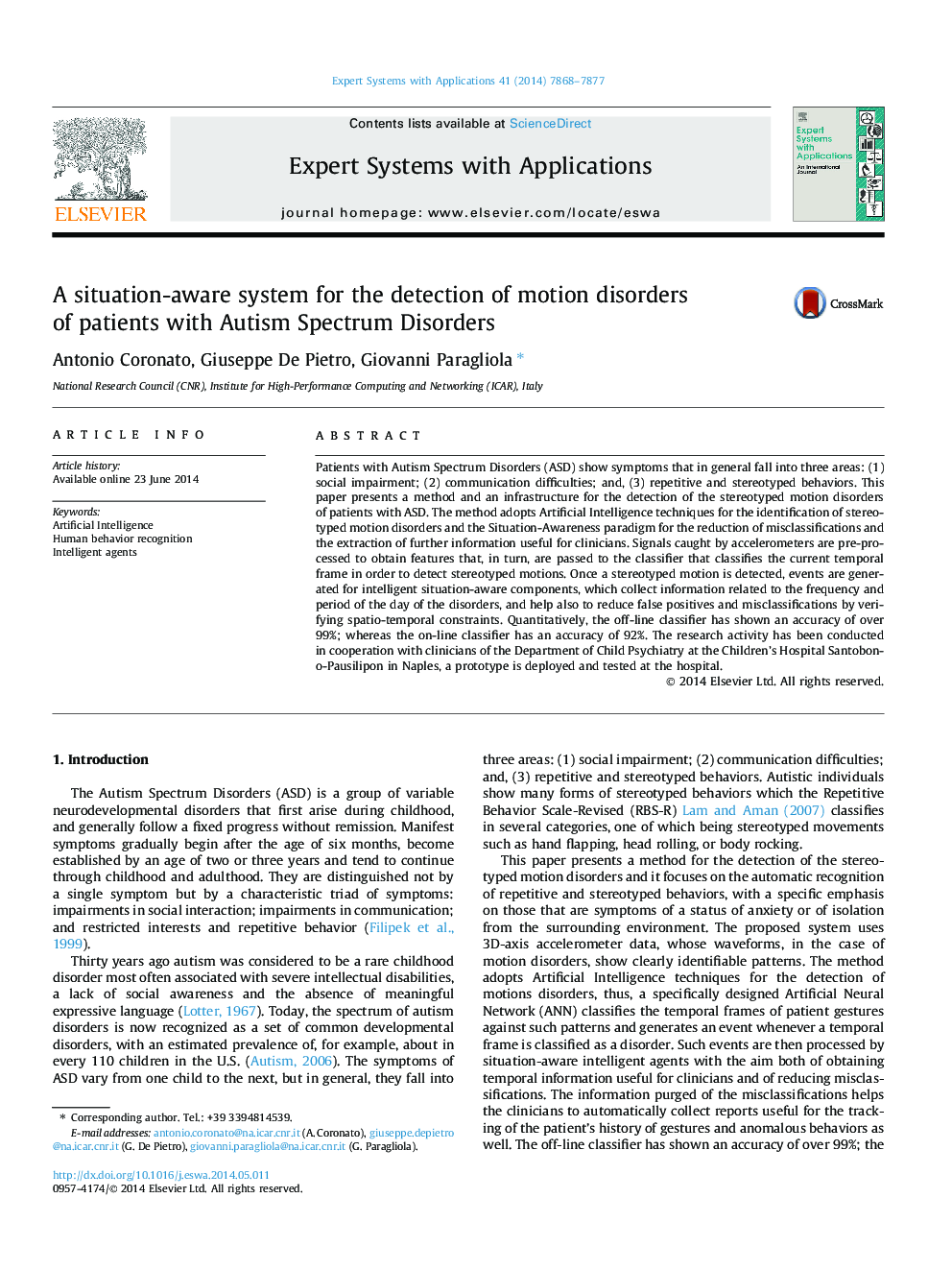| Article ID | Journal | Published Year | Pages | File Type |
|---|---|---|---|---|
| 382282 | Expert Systems with Applications | 2014 | 10 Pages |
•This paper presents a method for the detection of the stereotyped motion disorders.•The method adopts Artificial Intelligence techniques for the detection.•The agents remove misclassification errors and improve the quality of the detection.•The off-line classifier has shown an accuracy of over 99%; the on-line an accuracy of 92%.•A prototype is deployed and tested at the hospital.
Patients with Autism Spectrum Disorders (ASD) show symptoms that in general fall into three areas: (1) social impairment; (2) communication difficulties; and, (3) repetitive and stereotyped behaviors. This paper presents a method and an infrastructure for the detection of the stereotyped motion disorders of patients with ASD. The method adopts Artificial Intelligence techniques for the identification of stereotyped motion disorders and the Situation-Awareness paradigm for the reduction of misclassifications and the extraction of further information useful for clinicians. Signals caught by accelerometers are pre-processed to obtain features that, in turn, are passed to the classifier that classifies the current temporal frame in order to detect stereotyped motions. Once a stereotyped motion is detected, events are generated for intelligent situation-aware components, which collect information related to the frequency and period of the day of the disorders, and help also to reduce false positives and misclassifications by verifying spatio-temporal constraints. Quantitatively, the off-line classifier has shown an accuracy of over 99%; whereas the on-line classifier has an accuracy of 92%. The research activity has been conducted in cooperation with clinicians of the Department of Child Psychiatry at the Children’s Hospital Santobono-Pausilipon in Naples, a prototype is deployed and tested at the hospital.
